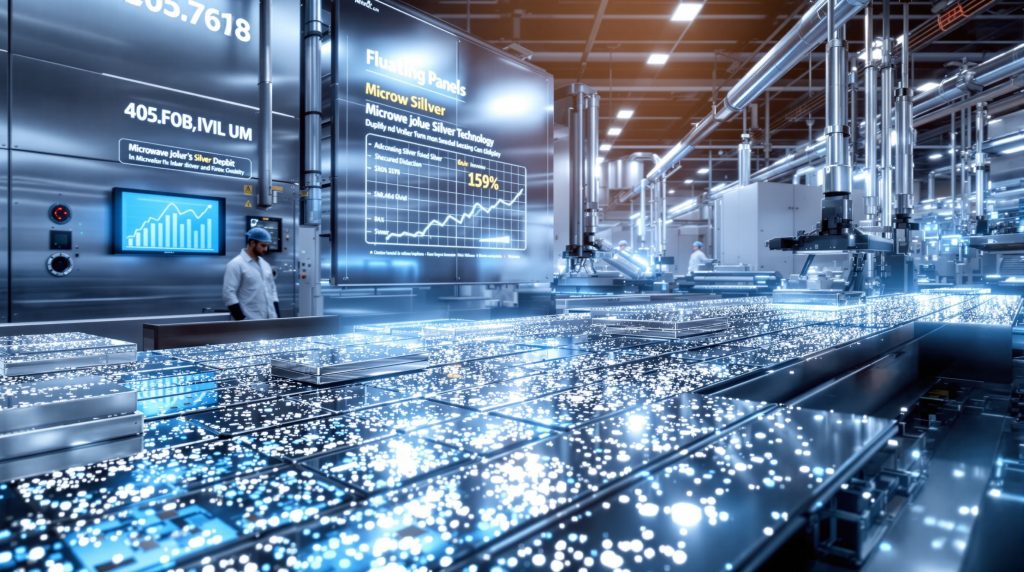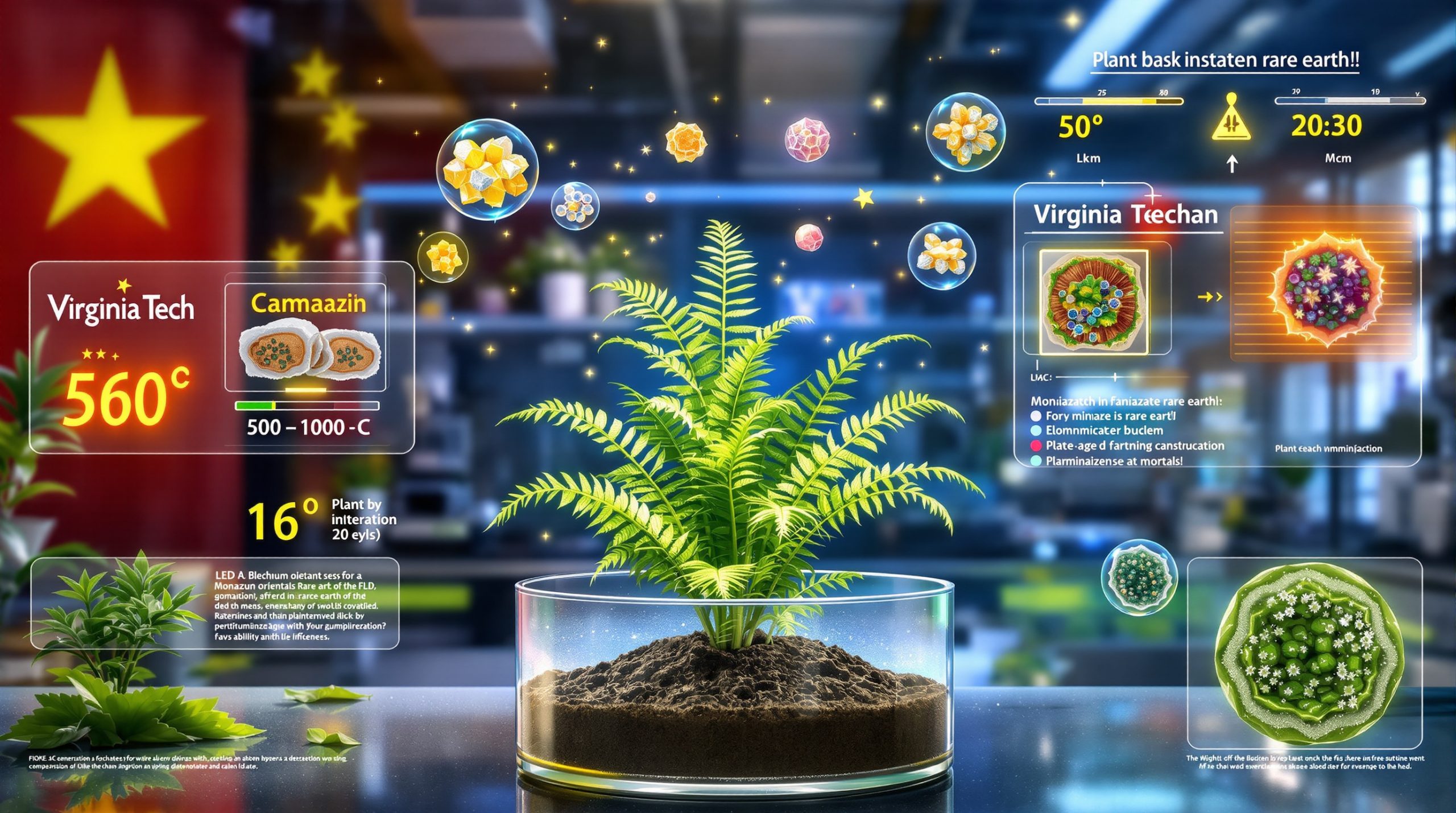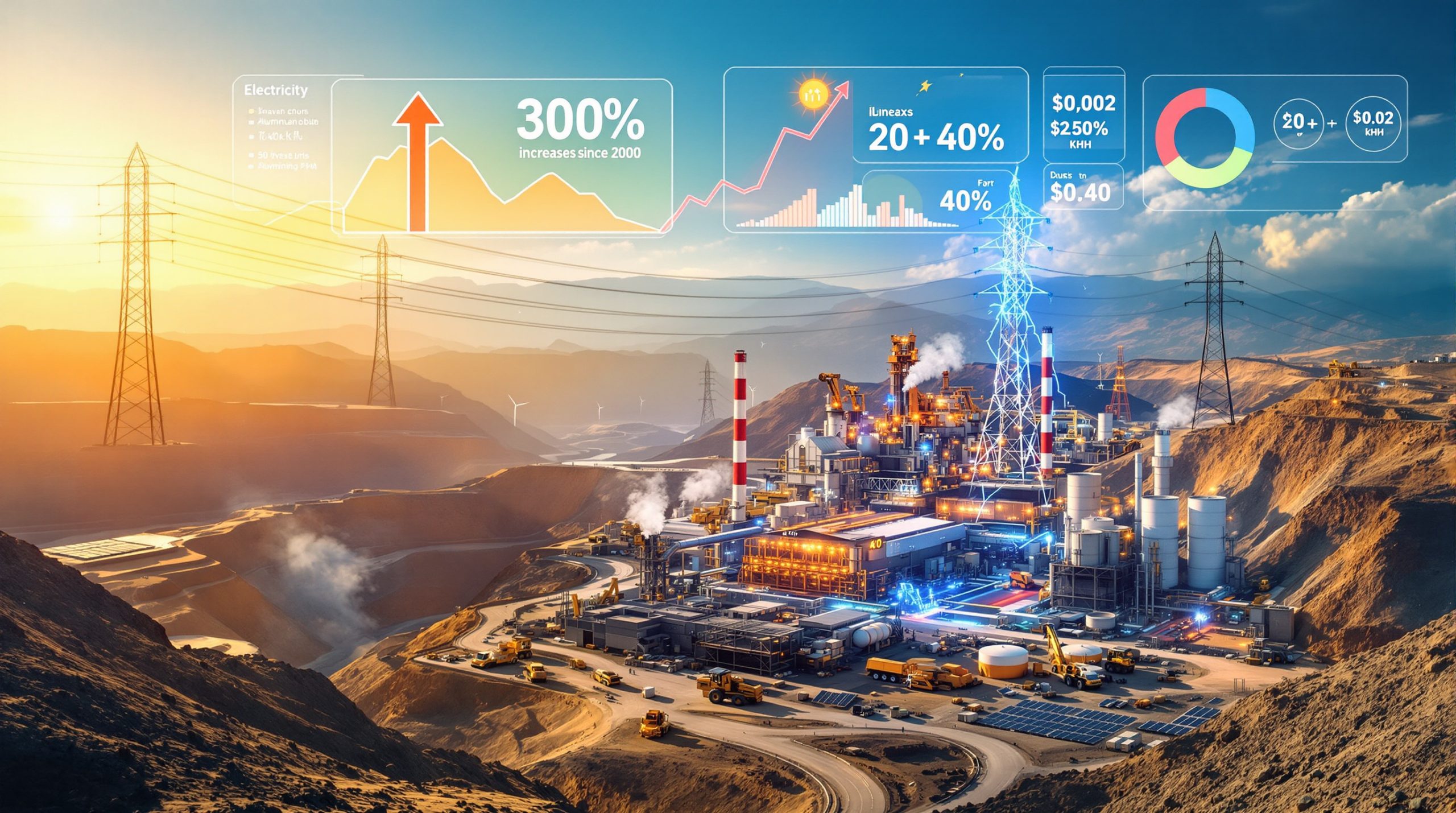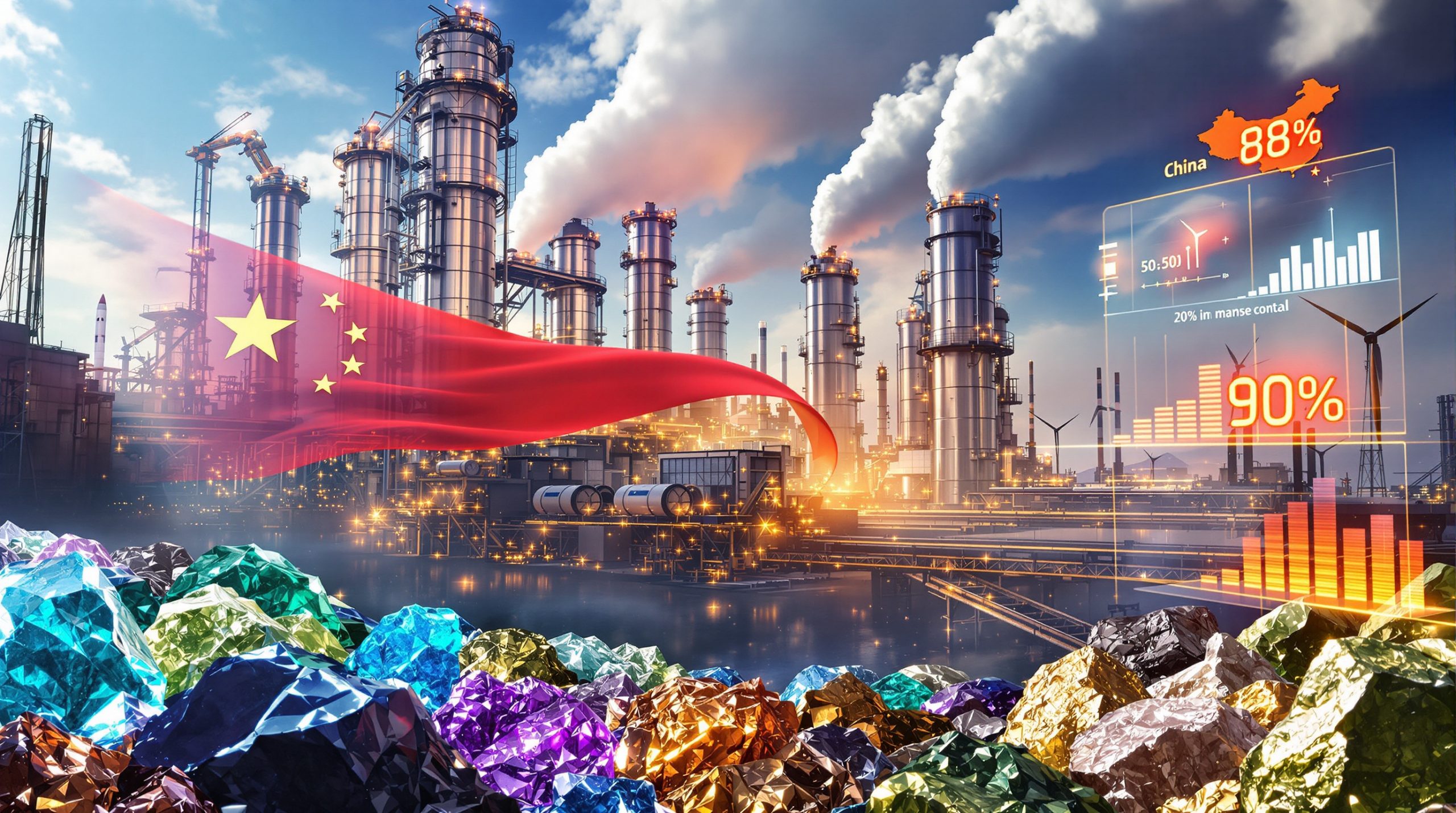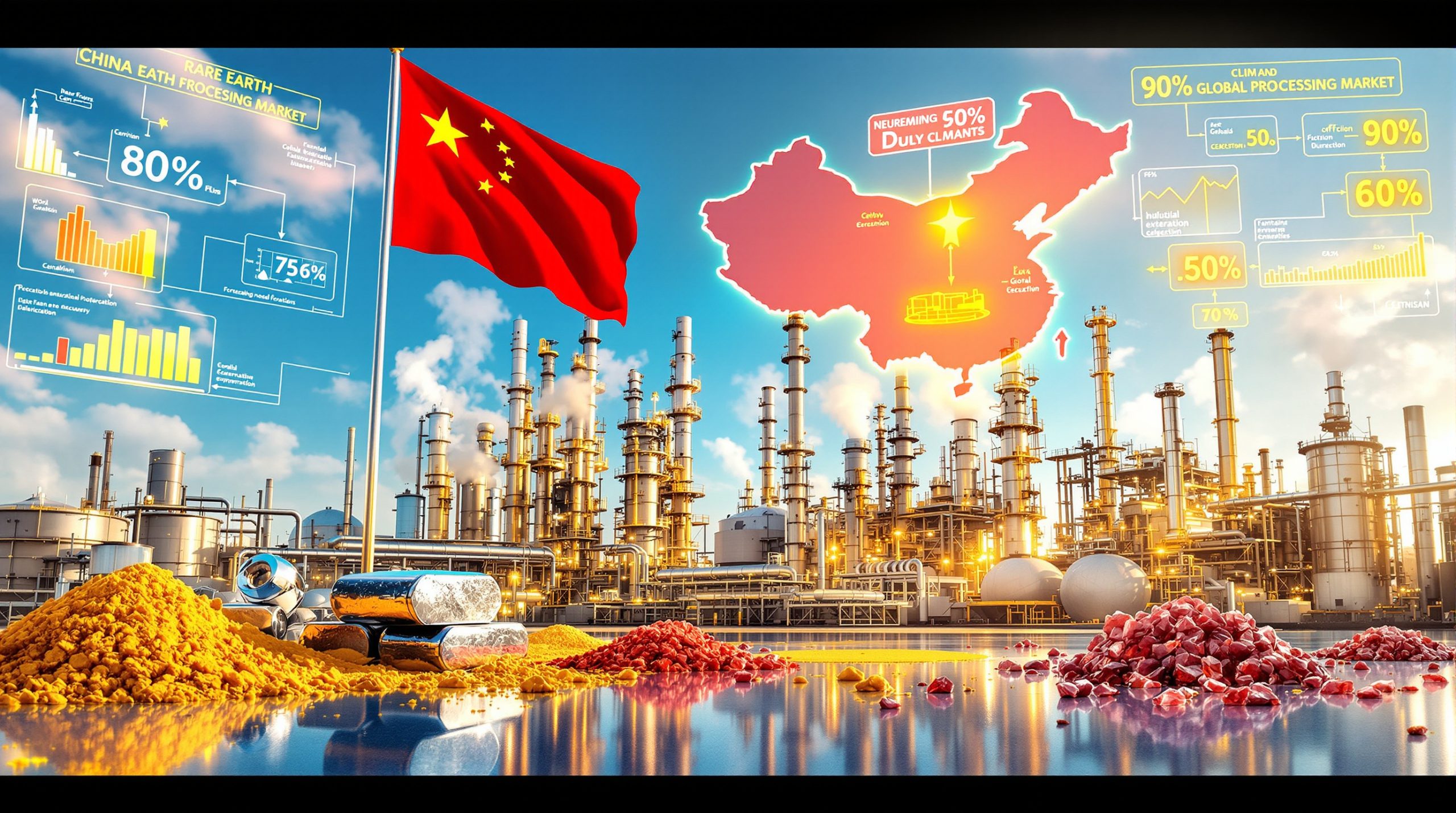The Silver Lining: How Solar Panel Recycling is Creating a New Silver Supply Chain
Solar energy has become a cornerstone of the global renewable transition, with over 4 million Australian homes and businesses now equipped with rooftop photovoltaic (PV) panels. This rapid adoption, while beneficial for reducing carbon emissions, creates a significant waste management challenge as these panels reach their end of life.
By 2050, global solar waste could reach a staggering 78 million tonnes. In Australia alone, approximately 1 million tonnes of decommissioned solar panels—containing recoverable materials valued at around $1 billion—risk ending up in landfills by 2035 unless recycling infrastructure expands significantly.
The challenge isn't merely environmental. Each discarded solar panel represents lost resources that could otherwise be recovered and reintroduced into the supply chain, reducing dependency on new mining operations and helping to create a more circular economy for clean energy technologies.
Why is solar panel recycling becoming a critical resource strategy?
The recycling of solar panels represents more than just waste management—it's emerging as a strategic approach to mineral security. With critical minerals transition increasingly concentrated in specific regions, recycling offers a pathway to diversify supply sources more rapidly than developing new mines.
China currently dominates the global landscape, controlling two-thirds of battery recycling growth since 2020 and maintaining a commanding position in the refining of 19 out of 20 strategic minerals. Recent export restrictions on materials like gallium, indium, and rare earths have highlighted how geopolitical factors can impact the availability of resources essential for renewable energy technologies, semiconductors, and defense applications.
In this context, recovering materials from retired solar modules reduces dependency on new mining operations and helps buffer against supply disruptions in increasingly volatile global markets. Solar waste silver recycling represents one of the few areas where critical mineral supply can be diversified relatively quickly compared to the years or even decades required to develop new mining projects.
How valuable is silver in solar panels?
Silver stands out as particularly valuable among the materials in solar panels. Each standard PV panel contains approximately 20 grams of silver used in conductive elements like "fingers" and busbars. When scaled across Australia's installed solar capacity, this embedded silver represents a resource comparable to the country's largest operational silver mine.
Industrial silver demand reached unprecedented levels in 2024, totaling 680 million ounces. The photovoltaic sector and artificial intelligence hardware manufacturing have emerged as the fastest-growing consumers of this precious metal.
Table: Silver Market Dynamics (2024)
| Metric | Value |
|---|---|
| Global Industrial Demand | 680 million ounces |
| Market Supply Deficit | 118 million ounces |
| Price Increase (2018-2025) | >150% (from US$15 to ~US$38/oz) |
| Major Growth Drivers | Solar PV, AI hardware |
The supply-demand imbalance has driven silver prices up by more than 150% since 2018, from approximately US$15 per ounce to around US$38 today. With solar installations projected to remain a primary driver of demand growth, recycling silver from decommissioned panels is becoming increasingly economically viable and strategically important for maintaining the pace of the clean energy transition.
Unlike many other industrial metals, silver combines precious metal value with irreplaceable technical properties—its electrical conductivity makes it essential for high-performance solar cells, and finding substitutes has proven challenging despite ongoing research efforts.
What are the limitations of conventional recycling methods?
Traditional approaches to recycling solar panels typically involve mechanical shredding, thermal processing to burn away binding materials, and chemical treatment with acids. However, these methods have significant drawbacks:
- High energy consumption
- Production of low-grade material outputs
- Poor recovery rates for high-value components like silver
- Inability to salvage high-purity silicon
- Environmental concerns from chemical processing
These limitations have prompted research into more efficient and sustainable recycling technologies that can maximize value recovery while minimizing environmental impact. Conventional methods typically recover less than 70% of the silver content in panels, and the recovered material often requires substantial additional refining before it can be reused in high-value applications.
Furthermore, the silicon wafers—which represent another significant component of a panel's value—are typically destroyed during conventional recycling processes, resulting in much lower-value crushed silicon rather than intact wafers that could potentially be reused.
How are innovative technologies transforming solar panel recycling?
Advanced recycling technologies are revolutionizing how we recover valuable materials from end-of-life solar panels. Recent innovations focus on preserving component integrity and achieving higher recovery rates for precious metals.
One promising approach uses Microwave Joule Heating Technology (MJHT) to precisely delaminate panels layer by layer, preserving the structural integrity of valuable components. This controlled separation process is followed by Jet Electrochemical Silver Extraction (JESE), which can recover more than 95% of the silver content in a form pure enough for direct reuse in semiconductor manufacturing or new solar cells.
Table: Value Recovery Comparison
| Material | Traditional Recycling | Advanced Layer Separation | Value Difference |
|---|---|---|---|
| Silver | Low-grade recovery (<70%) | High-purity recovery (>95%) | 3-4× higher value |
| Silicon | Crushed/contaminated | Intact wafers for reuse | 5× higher value |
| Glass | Fragmented | Whole sheets recoverable | 2× higher value |
| Overall Economic Return | Baseline | 3-4× higher | Significant |
This layer-by-layer approach preserves silicon wafers and glass sheets in reusable form, delivering three to four times greater value recovery compared to conventional recycling methods. The ability to produce high-purity recovered materials suitable for direct reintegration into manufacturing processes represents a significant advancement in circular economy principles for the solar industry.
The technology also offers environmental benefits beyond improved material recovery rates. By avoiding the need for acid leaching and thermal processing, these advanced methods can significantly reduce the carbon footprint and chemical waste associated with solar panel recycling.
Why is silver recycling economically attractive during a lithium downturn?
The economic case for solar waste silver recycling has strengthened as silver prices have risen while other mineral markets have weakened. Lithium carbonate prices, for example, have fallen more than 80% from their 2022 peak, causing many companies in the battery materials sector to reassess their strategies.
By contrast, the economics of recovering silver and silicon from solar panels continue to improve as supply deficits widen and prices increase. This counter-cyclical relationship makes solar panel recycling an attractive diversification opportunity for companies in the broader critical minerals space.
For businesses with existing expertise in mineral processing and refining, expanding into solar panel recycling offers a strategic hedge: when traditional mineral markets like lithium eventually rebound, these companies will have established positions in multiple critical mineral supply chains.
The timing is particularly favorable as the first major wave of solar panel retirements approaches. Panels installed during the initial solar boom of the early 2000s are now reaching the end of their typical 20-25 year lifespan, creating a growing stream of recyclable material that coincides with historically high silver market dynamics.
How does solar recycling fit into national resource strategies?
Governments worldwide are investing heavily in securing new sources of critical minerals, but developing new mines and processing facilities is time-consuming and faces increasing regulatory hurdles. Solar panel recycling represents a faster, lower-impact approach to accessing resources already in circulation.
Australia's early and widespread adoption of rooftop solar means it will be among the first countries to face large-scale panel decommissioning. This timing creates an opportunity to develop domestic recycling capabilities that could transform a potential waste management problem into a strategic resource advantage.
Table: Australia's Solar Recycling Opportunity
| Timeline | Estimated Panel Waste | Recoverable Silver | Approximate Value (2025 Prices) |
|---|---|---|---|
| By 2030 | 300,000 tonnes | 6,000 kg | US$7.3 million |
| By 2035 | 1 million tonnes | 20,000 kg | US$24.3 million |
| By 2050 | 8+ million tonnes | 160,000+ kg | US$194+ million |
The development of efficient recycling technologies for solar panels aligns with broader circular economy goals and supports resource security objectives by reducing dependency on imported materials and volatile international supply chains.
From a policy perspective, the approach offers multiple benefits: it addresses waste management solutions, creates domestic jobs, strengthens resource security, and supports the continued expansion of renewable energy by ensuring a more sustainable lifecycle for solar technologies.
What are the broader implications for sustainable resource management?
The emerging solar panel recycling industry highlights a fundamental shift in how we think about resource management in the clean energy transition. Rather than focusing exclusively on expanding primary production capacity, there's growing recognition of the importance of preserving and recirculating materials already in use.
As silver demand continues to outpace supply, the panels being removed from rooftops represent not just waste to be managed but a valuable urban mine that can contribute significantly to resource security. This perspective aligns with circular economy principles and recognizes that sustainability requires attention to the full lifecycle of materials, not just their initial deployment.
The solar panel recycling model could also serve as a template for other clean energy technologies approaching end-of-life, including wind turbine blades, electric vehicle batteries, and energy storage systems. In each case, the challenge is to maximize the recovery of valuable materials while minimizing environmental impact.
This more circular approach to resource management may ultimately prove essential for the long-term sustainability of the clean energy transition, ensuring that today's solutions don't simply create tomorrow's waste problems.
What challenges remain for scaling solar panel recycling?
Despite the promising economics and environmental benefits, several challenges must be addressed to scale solar panel recycling effectively:
- Collection infrastructure: Establishing efficient systems for gathering end-of-life panels from distributed installations
- Regulatory frameworks: Developing policies that prevent landfill disposal and incentivize recycling
- Technology standardization: Scaling up innovative recycling technologies from laboratory to commercial scale
- Market development: Creating reliable markets for recovered materials
- Consumer awareness: Educating solar panel owners about proper end-of-life management
Addressing these challenges requires collaboration between industry, government, and research institutions to develop integrated solutions that maximize resource recovery while minimizing environmental impact.
One of the most significant hurdles is the distributed nature of solar installations. Unlike centralized power plants, solar panels are spread across millions of rooftops and thousands of solar farms, making efficient collection and aggregation of end-of-life panels logistically complex and potentially costly.
Extended producer responsibility programs, which make manufacturers responsible for the end-of-life management of their products, could help address collection challenges while also incentivizing designs that facilitate easier recycling.
What does the future hold for solar waste recycling?
The future of solar panel recycling looks promising as economic drivers align with environmental imperatives. As the first generation of mass-deployed solar panels reaches end-of-life in the coming years, the industry is poised for significant growth.
Advanced recycling technologies that can recover high-purity silver, silicon, and other materials will likely become standard practice as their economic advantages become more widely recognized. Integration with broader electronic waste recycling infrastructure could create additional efficiencies and scale economies.
The emergence of design-for-recycling approaches in new solar panel manufacturing may further improve future recyclability, creating a more circular solar industry where today's installations become tomorrow's raw materials.
Looking ahead, automated disassembly systems using robotics and artificial intelligence could further reduce processing costs while improving recovery rates. These technologies, combined with growing regulatory pressure to address electronic waste, point toward a future where nearly all components of solar panels are recovered and reused rather than discarded.
Recent flash joule heating innovation and battery recycling breakthrough technologies provide promising models for how solar panel recycling might evolve to become even more efficient and economically viable in the coming years.
FAQ: Solar Panel Silver Recycling
How much silver is in a typical solar panel?
A standard solar panel contains approximately 20 grams of silver, primarily in the conductive elements that collect and transport electricity generated by the silicon cells.
What is the current recovery rate for silver from recycled solar panels?
Advanced recycling technologies can achieve silver recovery rates exceeding 95%, compared to 60-70% with conventional methods.
Is recycled silver of sufficient quality for reuse in new solar panels?
Yes, when extracted using advanced methods like Jet Electrochemical Silver Extraction, the recovered silver can be of sufficient purity for direct reuse in new solar panels or other high-tech applications.
How does the carbon footprint of recycled silver compare to newly mined silver?
Recycled silver typically has a carbon footprint 30-40% lower than silver from primary mining operations, making it environmentally preferable even beyond the waste reduction benefits.
What policy measures could accelerate solar panel recycling?
Extended producer responsibility programs, landfill bans for electronic waste, recycling incentives, and minimum recycled content requirements for new panels could all accelerate the development of solar recycling infrastructure.
Further Exploration:
Readers interested in learning more about the emerging field of solar panel recycling can also explore related educational content, such as the International Energy Agency's "Global Critical Minerals Outlook 2025" report, which provides additional context on mineral supply chains and recycling opportunities.
Ready to Profit from the Next Major Mineral Discovery?
Discover how to identify significant ASX mineral discoveries the moment they're announced with Discovery Alert's proprietary Discovery IQ model, giving you a crucial edge in both short-term trading and long-term investment opportunities. Learn why historic discoveries can generate substantial returns by visiting Discovery Alert's dedicated discoveries page.
